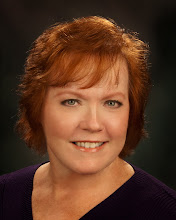How is a French bead flower made?
One of the "founding mothers" of French bead flowers in America, Virginia Nathanson, wondered the same thing when she saw some potted arrangements in the gift shop of Bonwit Teller in Manhattan several decades ago.
She used a rather drastic forensic method to get her answer.
She bought one of the large, lovely arrangements and took it home. Unlike other customers of that gift shop, she did not put the arrangement on a coffee table to admire it. She didn’t want visitors to gasp in delight, exclaim over the workmanship and ask where she had found such a treasure.
Instead, Virginia took it apart. Completely dismantled it. She disassembled the sprays and unwrapped all the silk stem wrapping and floral tape. She separated each leaf and sepal from its stem. She broke up each flower, unwound each petal's wires, counting and measuring lengths and quantities of beads that had been used. She examined what materials were used for stemming, supporting and potting the flowers.
By this straightforward method, Ms. Nathanson discovered the French bead flower construction techniques and learned them well. She taught them for many years and wrote several exhaustive books on the subject. These books comprised one of the first series of French bead flower pattern books to be published in the U.S.
The destruction of that arrangement from Bonwit was the beginning of the development of many, many new bead flower artists. From the information Virginia Nathanson provided came hundreds of bouquets, arrangements, headbands, corsages and countless other items. Artists in America, and now the world over, have been inspired to learn this art, to teach it to others, and to make lovely creations with improved and refined materials. In the last few years, many excellent new pattern books and other instructional materials have been produced by artists who learned the art from Ms. Nathanson's books.
New bead flower artists from around the world worked together to make a wreath for each crash site from the 9/11/01 disaster. One of these wreaths now hangs in the Pentagon, one is on permanent display in the Liberty Museum in Philadelphia, and the third will be a part of the future permanent memorial at Ground Zero.
Ms. Nathanson passed away in the Spring of 2008. Thank you, Ms. Nathanson, for dismantling that Bonwit arrangement. You've been an inspiration, and you were one great lady.
My French Bead Flower website
My French Bead Flower Squidoo lens
My Wreaths Project video
I am building a recession-proof online income. Join me?
Subscribe to:
Post Comments (Atom)


1 comment:
I love the older beaded flowers and have picked up a few here and there in vintage/antique stores. Is there any way of telling how old they are or where they came from, such as if they are from France or made here? I have one little bouquet that looks like an african violet, leaves in a circle, flowers in the center. The stems are a thin but still bendable wire, and it appears to me to be very well done compared to other old ones I have seen. No damage at all, but the stem is wrapped with regular florist tape. That could have been done recently, though.
I paid about 30 or 40$, but all the shop owner could tell me is that they were very old, probably around the 1930's. I don't think he really knew...
Also, I do use them. I enjoy my things, I don't keep them packed away because they are too "valuable" Life is too short. Usually I have them in a small bud vase, or I gently arrange the bouquet to lay it at the feet of my blessed mother statue. Is this bad? Is there any way of using them that I should avoid?
Thanks for your advice if you have any. Your work is beautiful! I really admire people who can do such detailed work, which is why I love these flowers in the first place. I am hoping mine will be in good enough condition to pass on to my nieces someday.
Jen
Post a Comment